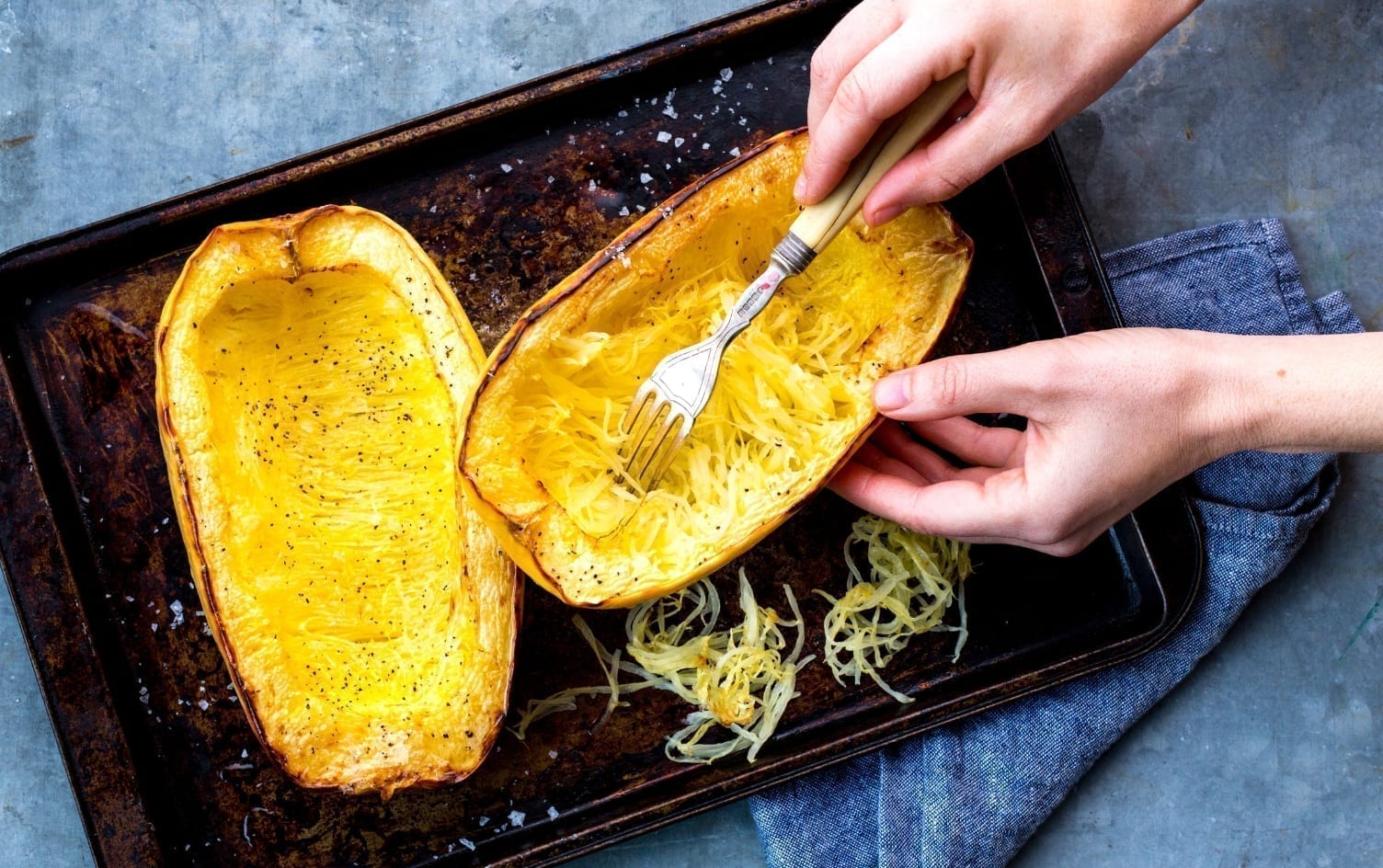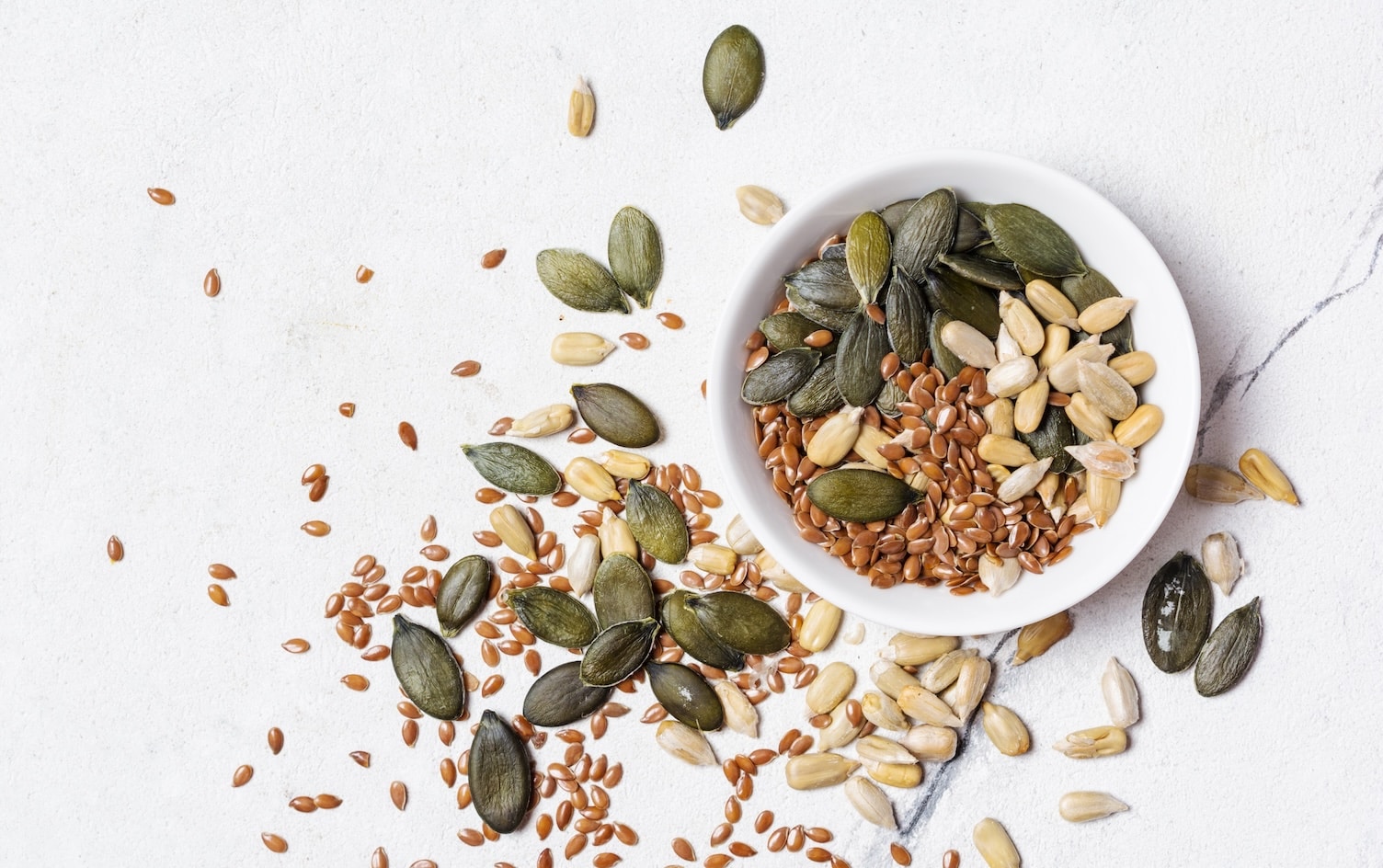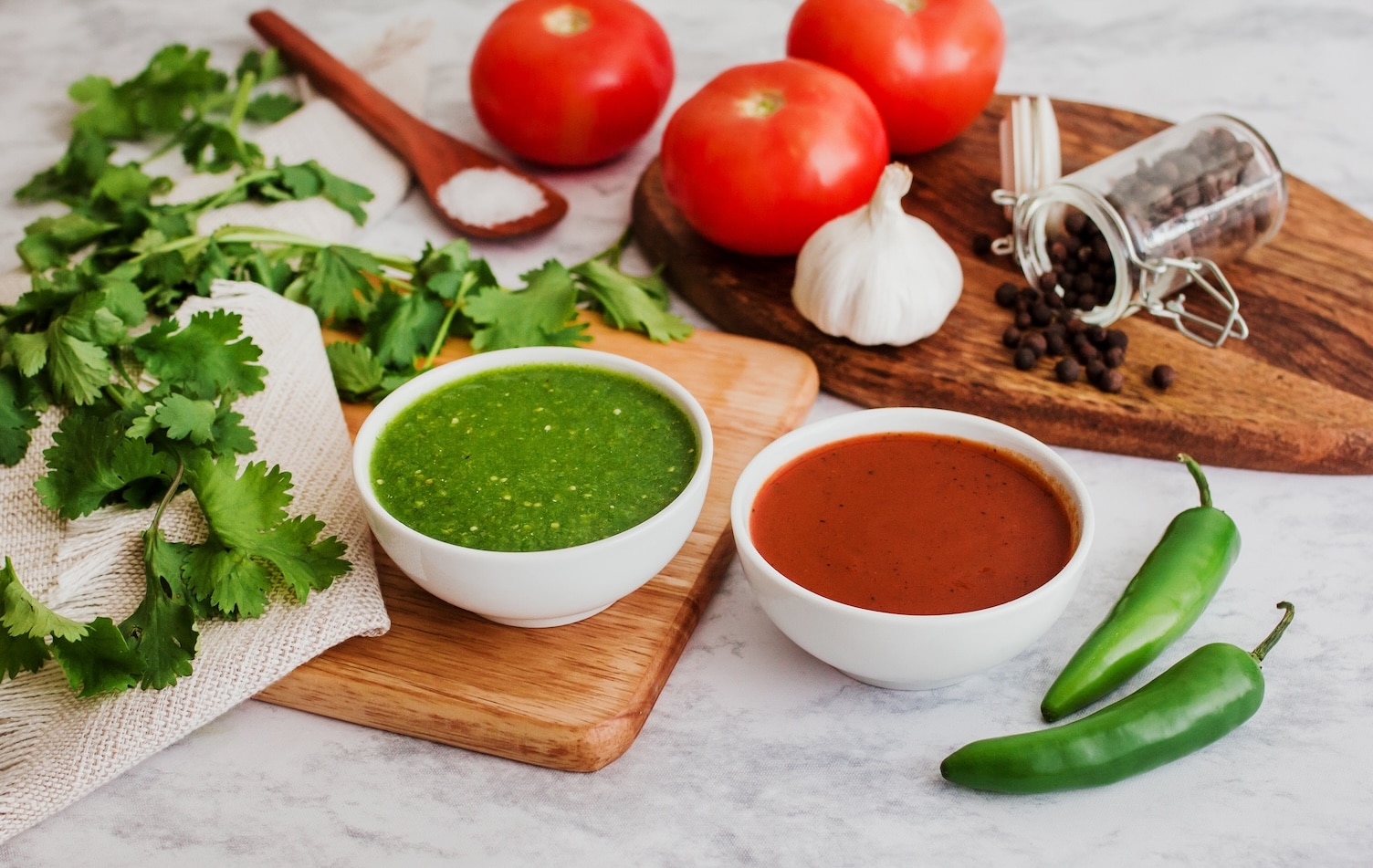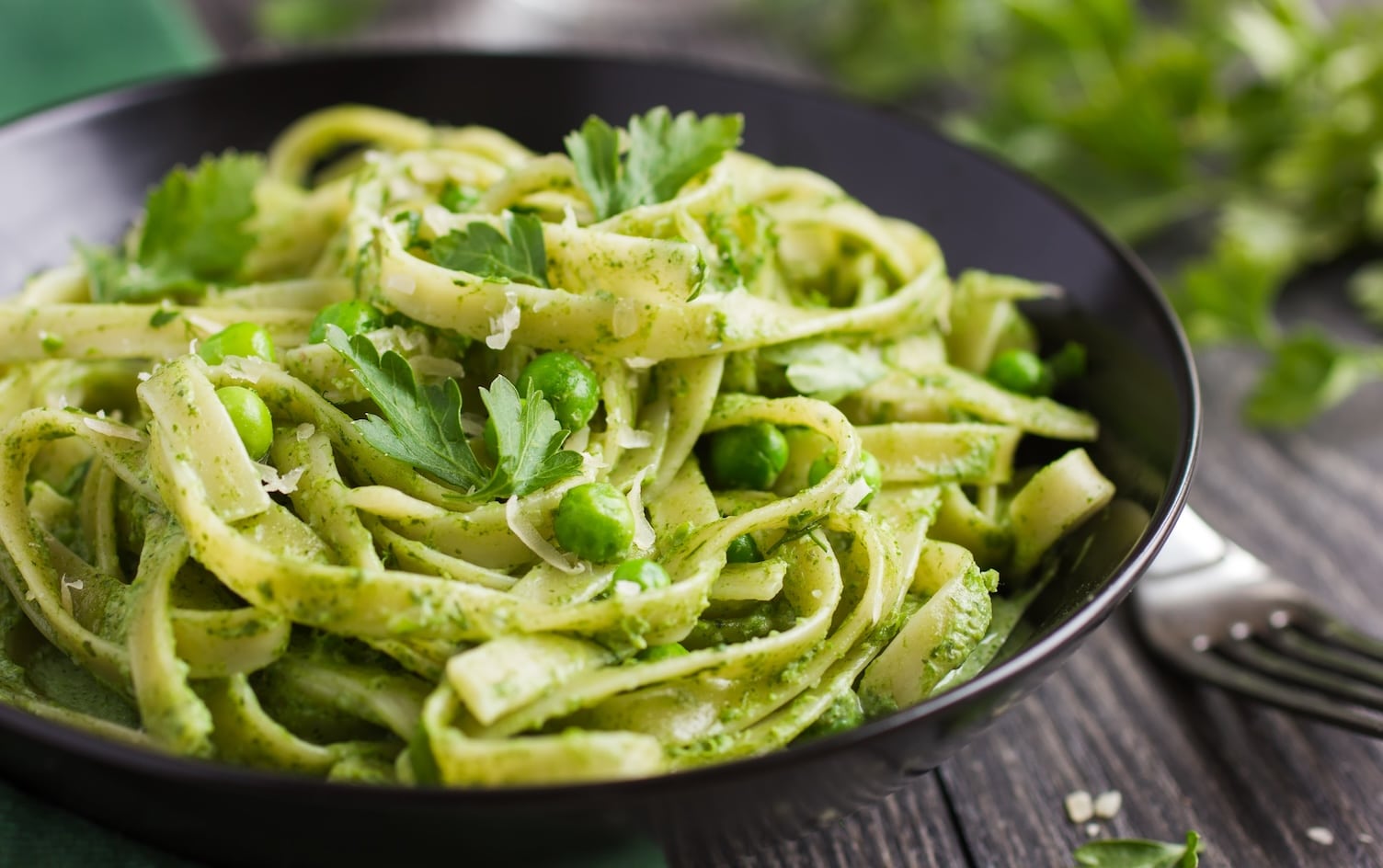Fall and winter is the ideal time of year to add more squash to your diet. Low-calorie and low-carb, squash are naturally sweet and packed with several antioxidants, vitamins and minerals. Since there are so many varieties, they can be incorporated into any meal (from breakfast to dinner). Take a trip to your local farmers market and pick up the seasonal produce to include in your cozy, warming meals.
NUTRITION BENEFITS
Squash is rich in vitamins A, B, C and E, as well as minerals like magnesium, potassium, calcium and iron. The antioxidants in squash offer anti-inflammatory properties, while the combination of B-vitamins, pectin and dietary fiber help position squash as a low-glycemic index food, which means it’s great for stabilizing blood sugars as part of a balanced meal. Many also contain B vitamins and heart-healthy omega-3 fats.
In addition to being low in calories, carbs and fat, squash’s natural sweetness means it’s low in sugar, especially compared to sweet potatoes. For example, 1 cup (200g) of butternut squash contains 82 calories and 3 grams of sugar compared to 1 cup (200g) of sweet potatoes, which has 114 calories and 6 grams of sugar.
COMMON TYPES OF SQUASH

Acorn squash resembles an acorn shape and can take on both sweet and savory flavors. To prepare, slice into ring shapes, coat lightly with olive oil and roast it in the oven. It is commonly flavored with olive oil, salt, pepper and other spices, like garlic, chili powder or paprika. For a sweeter flavor, add cinnamon and a pinch of brown sugar.

Butternut squash is probably what pops into your head when you think of a fall or winter squash. Unlike other squashes, you can peel butternut squash before cutting it and eating it. Butternut squash is delicious when roasted and eaten alone, offering a mild sweet flavor. It is also often pureed and used in soups or pasta sauces.
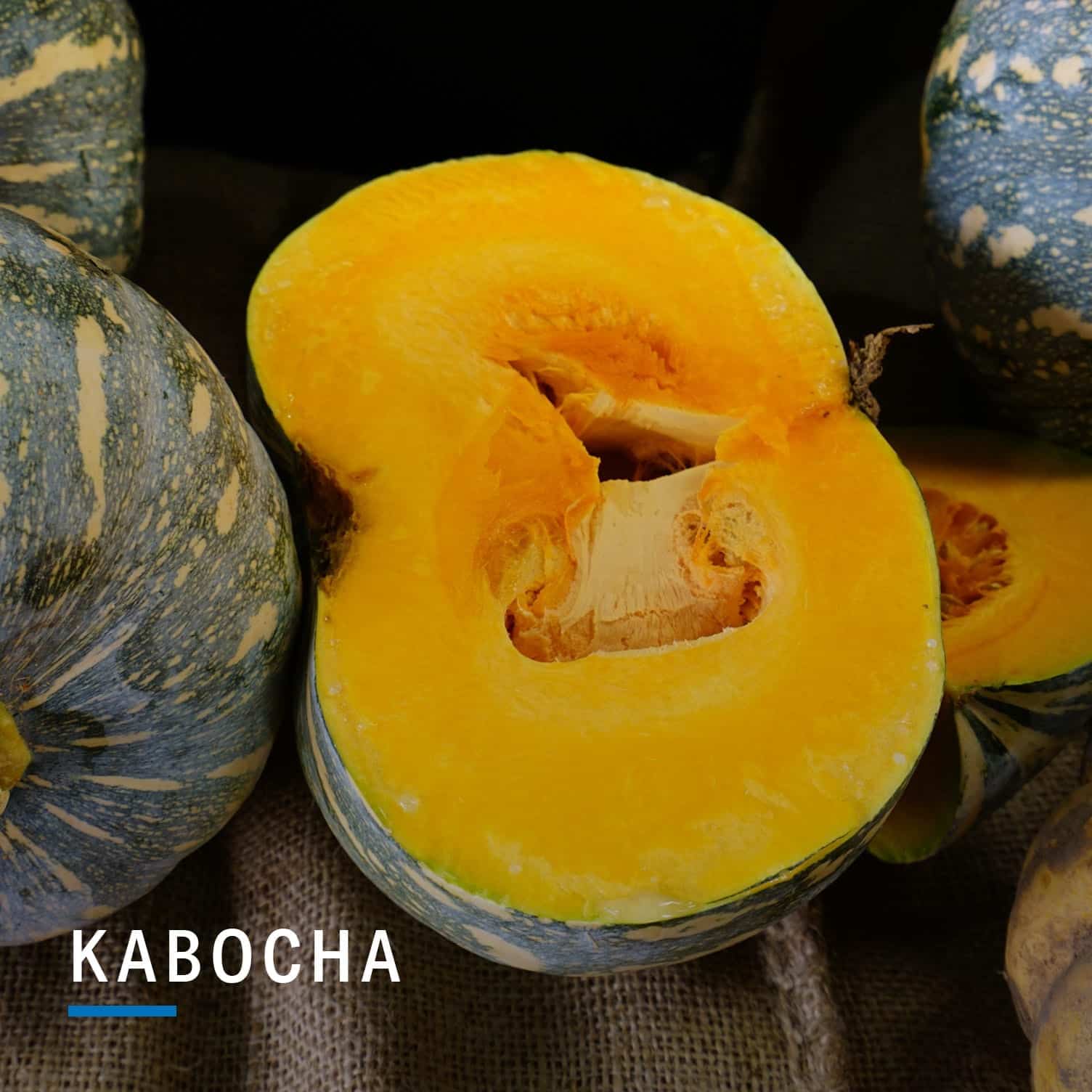
Kabocha squash is a Japanese winter squash, boasting a deep green exterior skin with a bright orange flesh. Like many other types of squash, you’ll need to cut it open and scoop out the seeds before roasting with oil and seasonings. Some compare the texture and flavor of kabocha squash to a fusion between pumpkin and sweet potato.
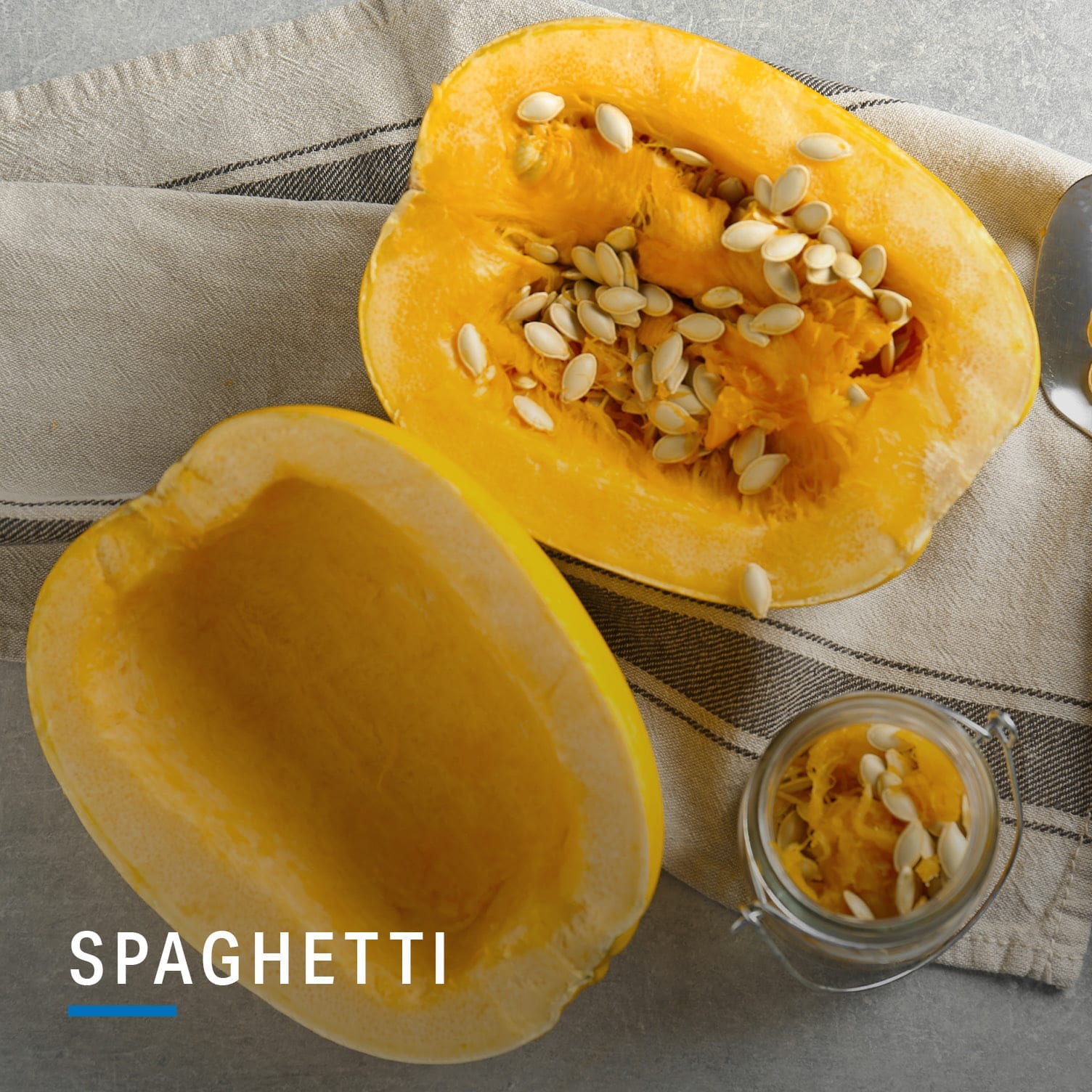
Also known as calabash squash, spaghetti squash has a similar appearance and consistency to actual spaghetti once it’s roasted and scooped out of its skin. To prepare, slice spaghetti squash in half lengthwise, scoop out the seeds and roast with skin facing up. It has a mild flavor and stringy texture and can seamlessly be substituted for pasta in most instances for a lower carbohydrate alternative.
EASY WAYS TO ADD MORE SQUASH TO YOUR DIET
- Mix spaghetti squash with regular pasta for a more nutrient-dense meal.
- Add it to soups and stews. Some of our favorites include creamy butternut squash and apple soup, black bean chili and pumpkin curry.
- Eat it for breakfast. Make egg cups, or use it in oatmeal, quiches, pancakes or waffles. Sweet or savory, squash packs fiber into your breakfast, keeping you full until lunch.
- Roast the seeds for a crunchy, protein-packed snack or topping for your salad.
- Use it in grain bowls. Mix-and-match different squash varieties with various whole grains and lean proteins for an easy meal.
